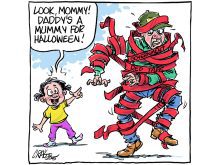THE RED Deer and South Saskatchewan rivers converge at the Alberta-Saskatchewan border, but provincial perceptions about water diverge at the same place.
In Alberta, concern is growing that water shortages will limit the province’s growth, particularly in the south. In Saskatchewan, the irrigation sector looks at the same river systems, sees no shortage and advocates doubling irrigated acreage.
The two perceptions seem incompatible, but a deeper look shows both views are valid and the experience in Alberta has lessons for Saskatchewan.
The rivers of the South Saskatchewan River basin are a lifeline in both provinces. Calgary, Saskatoon, Regina and a host of other communities get their water from the system. Farmers draw water to grow crops that sustain a range of agricultural industries.
Read Also

Farmer ownership cannot be seen as a guarantee for success
It’s a powerful movement when people band together to form co-ops and credit unions, but member ownership is no guarantee of success.
But while the uses are same in both provinces, the extent of water based development differs.
Alberta’s urban boom is legendary, straining all resources, while Saskatchewan’s growth has only just begun.
In Alberta, irrigation districts have the lion’s share of water allocation rights, using them to irrigate 1.34 million acres or four percent of the province’s cultivated land, producing 18 to 20 percent of its total agricultural production by value.
It makes possible the big beef packing plants, potato processors and other industries that provide jobs to young people.
By contrast, Saskatchewan has a modest 340,000 irrigated acres and uses much less of its share of South Saskatchewan water than Alberta does. The Saskatchewan’s irrigation association sees the benefits irrigation has delivered to Alberta and wants to recreate them.
But Alberta, experience also has warnings. In some southern rivers, allowable withdrawals have been fully allocated and the provincial government won’t issue new licences. Developments not associated with those with existing water rights must buy water from rights holders in a new water market.
The price of water is escalating. For now, the market presents irrigators an opportunity to sell water to pay for improvements that save water.
But if the cost of water begins to inhibit urban growth, the public will question agriculture’s control over so much water.
It’s an issue that Alberta irrigators already face and that Saskatchewan must plan to avoid.
The solution lies in efficient water use.
Anyone who has lived on a farm with a well or has hauled water marvels at the water waste in cities in pursuit of hyper hygiene, green grass and shiny cars.
But irrigation also has waste, with leaky canals and inefficient equipment.
Attitudes are changing. Cities are starting to promote water-efficient appliances and low-water use landscaping.
Irrigators are improving delivery systems and employing efficient drip technology.
Everyone must learn to see water for what it is: a precious resource.
It is important to use it to generate economic and population growth but even more important to use it wisely.
Bruce Dyck, Terry Fries, Barb Glen, D’Arce McMillan and Ken Zacharias collaborate in the writing of Western Producer editorials.














